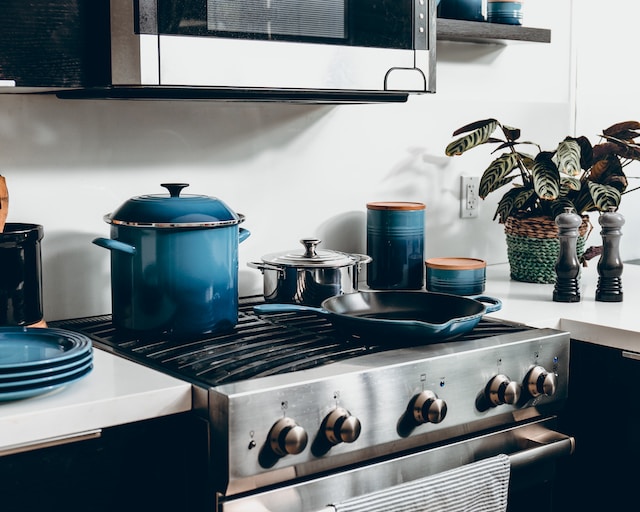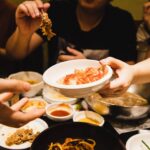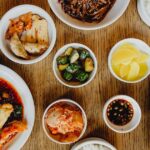Check Out Amazons Huge Range Of Korean Kitchenware

Best Korean Rice Cookers In 2023
For Koreans, rice is more than just a food staple; it’s a cultural icon that represents the essence of their cuisine. Rice is eaten at virtually every Korean meal, providing sustenance and flavor to dishes ranging from savory stews to light salads. But cooking rice to perfection requires not only skill but also the right equipment, and that’s where Korean rice cookers come in.
In this article, we’ll explore the history, science, and technology behind these essential kitchen appliances, and show you how to cook different varieties of rice to perfection using a Korean rice cooker.
The History of Korean Rice Cookers
The history of rice cultivation in Korea dates back more than 4,000 years, and over that time, various methods have been used to cook rice. In the past, Koreans cooked rice in large cauldrons over open flames in communal settings. This communal cooking of rice was a significant part of Korean culture and was often done during special occasions, such as weddings and harvest festivals. The process of cooking rice in a large cauldron over an open flame was a labor-intensive process that required constant attention to ensure that the rice was cooked evenly.
As technology advanced, Koreans started using metal pots with lids to cook rice over charcoal stoves. This method of cooking rice was much more efficient than using a cauldron and allowed for individual households to cook rice on a daily basis. The metal pots were easy to clean and could be used to cook other dishes as well.
Electric rice cookers became popular in South Korea in the 1970s, with companies like Cuckoo leading the way and becoming synonymous with high-quality rice cookers. The introduction of electric rice cookers made cooking rice even more convenient for Koreans, as they no longer had to monitor the pot on the stove. Instead, they could simply add rice and water to the rice cooker and let it do the rest.
Traditional Korean Rice Cooking Methods
Before the advent of modern rice cookers, Koreans used clay pots and wooden utensils to cook their rice. The traditional method of cooking rice involves soaking the grains in cold water for several hours before draining them and adding them to a pot with the appropriate amount of water. The rice is then cooked on low heat until the water is absorbed, creating a fluffy and perfectly cooked batch of rice.
The traditional method of cooking rice is still used today, especially during special occasions. Many Koreans believe that rice cooked in a clay pot has a unique flavor and texture that cannot be replicated by an electric rice cooker.
The Evolution of Electric Rice Cookers in Korea
Electric rice cookers revolutionized the way Koreans cook rice. These appliances use sensors to monitor the level of water and temperature in the pot, ensuring that the rice is cooked to perfection every time. Over time, rice cookers have become more sophisticated, with features like fuzzy logic technology that automatically adjusts the cooking time and temperature based on the type of rice being cooked. Today, rice cookers are an essential appliance in every Korean household.
Not only are rice cookers used for cooking rice, but they can also be used to make other dishes like stews and soups. Some rice cookers even come with a steaming basket, allowing for easy steaming of vegetables and other foods.
As technology continues to advance, it will be interesting to see how rice cookers evolve in the future. Perhaps we will see rice cookers that can cook multiple dishes at once or even ones that can be controlled using a smartphone app.
The Science Behind Perfectly Cooked Rice
While rice cookers have made cooking rice a breeze, there is still some science behind achieving that perfectly cooked batch of rice. Here are some factors to keep in mind:
The Role of Water and Temperature
Water and temperature are the two most critical factors in cooking rice. When you add water to uncooked rice, the outer husk of the grain absorbs water and cracks open. The water then enters the inner part of the grain, where it softens and cooks the starch. The temperature of the water determines how quickly the starch cooks and how fluffy the rice becomes.
It’s important to note that the ratio of water to rice also affects the final result. The general rule of thumb is to use 1.5 to 2 cups of water for every cup of rice. However, this can vary depending on the type of rice being used and personal preference. For example, some people prefer their rice to be more al dente and use less water, while others prefer a softer texture and use more water.
Another factor to consider is the altitude at which you are cooking. At higher altitudes, water boils at a lower temperature, which can affect the cooking time and result in undercooked rice. To compensate for this, you may need to increase the cooking time or use more water.
The Importance of Soaking and Rinsing
Soaking the rice before cooking it helps reduce the cooking time and ensures that the grains cook evenly. It also helps remove excess starch and other impurities that can affect the flavor and texture of the cooked rice. The length of time to soak the rice can vary depending on the type of rice being used. For example, white rice may only need to soak for 15-30 minutes, while brown rice may require several hours.
Rinsing the rice before cooking is also crucial to remove any dust and dirt that can accumulate during storage. It’s essential to rinse the rice thoroughly until the water runs clear. Some people also prefer to soak the rice and then rinse it before cooking to ensure that all impurities are removed.
Overall, achieving perfectly cooked rice requires attention to detail and an understanding of the science behind the cooking process. By considering factors such as water temperature, ratio, altitude, soaking, and rinsing, you can ensure that your rice turns out fluffy and delicious every time.
Popular Korean Rice Cooker Brands
When it comes to Korean rice cookers, several brands are synonymous with quality and reliability. Here are three of the most popular:
Cuckoo: The Leading Korean Rice Cooker Brand
Cuckoo is the most well-known rice cooker brand in South Korea, and for good reason. The company has been producing rice cookers for over 40 years and offers a range of models to suit every budget and cooking need. Cuckoo rice cookers feature advanced technology like fuzzy logic and multiple cooking functions, making them a top choice for Korean families.
One of the standout features of Cuckoo rice cookers is their durability. They are built to last and can withstand daily use for years without showing any signs of wear and tear. Cuckoo rice cookers also come with a variety of accessories, such as measuring cups and spatulas, to make cooking even easier.
In addition to their high-quality rice cookers, Cuckoo also offers other kitchen appliances like pressure cookers and multi-cookers. These appliances are designed to make cooking Korean dishes like galbi-jjim and doenjang-jjigae a breeze.
Breville: A Trusted Name in Kitchen Appliances
While Breville is not a Korean brand, their rice cookers are popular in Korea for their high-quality construction and advanced features. The Breville rice cooker features a unique steaming tray that allows you to cook vegetables and other foods while the rice is cooking, making it an all-in-one appliance.
Breville rice cookers also have a non-stick coating that makes cleaning up after cooking a breeze. This is especially helpful for busy families who don’t have a lot of time to spend on kitchen cleanup.
Another feature that sets Breville rice cookers apart is their sleek design. They are a great addition to any modern kitchen and can even be used as a serving dish for rice dishes like bibimbap.
Zojirushi: Japanese Quality Meets Korean Innovation
Zojirushi is a Japanese company that produces some of the world’s best rice cookers. While not a Korean brand, their rice cookers are popular in Korea for their advanced technology and excellent build quality. Zojirushi rice cookers feature microcomputer technology that adjusts the temperature and cooking time to suit the type of rice being cooked.
In addition to their high-tech features, Zojirushi rice cookers are also known for their energy efficiency. They use less electricity than traditional rice cookers, which can save families money on their monthly utility bills.
Zojirushi rice cookers come in a variety of sizes, from small models that are perfect for couples to large models that can feed a family of six or more. They also offer a range of colors and designs to match any kitchen decor.
Features to Look for in a Korean Rice Cooker
When choosing a Korean rice cooker, it’s important to look for certain features that can make cooking rice easier and more enjoyable. Here are some features to consider:
Fuzzy Logic Technology
Fuzzy logic technology allows the rice cooker to make precise temperature and cooking time adjustments based on the type of rice being cooked. This feature ensures that your rice is always cooked to perfection.
Multiple Cooking Functions
Some rice cookers come with multiple cooking functions, allowing you to cook different types of rice and other foods like soup, porridge, and steamed vegetables. This feature makes the rice cooker a versatile kitchen appliance.
Non-Stick Inner Pots and Easy Cleaning
Most rice cookers come with non-stick inner pots that make cleaning a breeze. Look for models with removable inner pots that can be easily washed in the sink or dishwasher.
How to Cook Different Types of Rice in a Korean Rice Cooker
Korean rice cookers can cook a variety of types of rice, and each type requires a slightly different cooking method to achieve the perfect texture and flavor. Here’s how to cook white rice, brown rice, and mixed rice in a Korean rice cooker:
White Rice: The Staple of Korean Cuisine
White rice is the most common type of rice used in Korean cooking. To cook perfect white rice, rinse the grains thoroughly and soak them in cold water for at least 30 minutes. Drain the water and add the rice to the rice cooker along with the appropriate amount of water as indicated in the instructions. Press the button, and the rice cooker will do the rest!
Brown Rice: A Nutritious Alternative
Brown rice is a healthier alternative to white rice and has a nuttier flavor and chewier texture. To cook brown rice in a Korean rice cooker, use a ratio of 1 ½ cups of water for every cup of rice. Soak the rice in cold water for at least an hour before cooking. Drain the water and add the rice and water to the rice cooker. Press the button and wait for perfection!
Mixed Rice: Combining Grains for Flavor and Texture
Mixed rice is a classic Korean dish that combines different types of grains like barley, millet, and sweet rice for a unique flavor and texture. To cook mixed rice in your Korean rice cooker, soak the grains in cold water for at least an hour, then drain and add them to the rice cooker along with the appropriate amount of water as specified in the instructions. Press the button and enjoy!
Korean rice cookers are an essential appliance in every Korean household for a reason. Their advanced technology and precise cooking methods make it easy to achieve that perfect bowl of rice every time. Whether you’re cooking white rice, brown rice, or mixed rice, a Korean rice cooker is the perfect tool for the job. So, why not invest in one of these essential kitchen appliances today and experience the difference for yourself?



